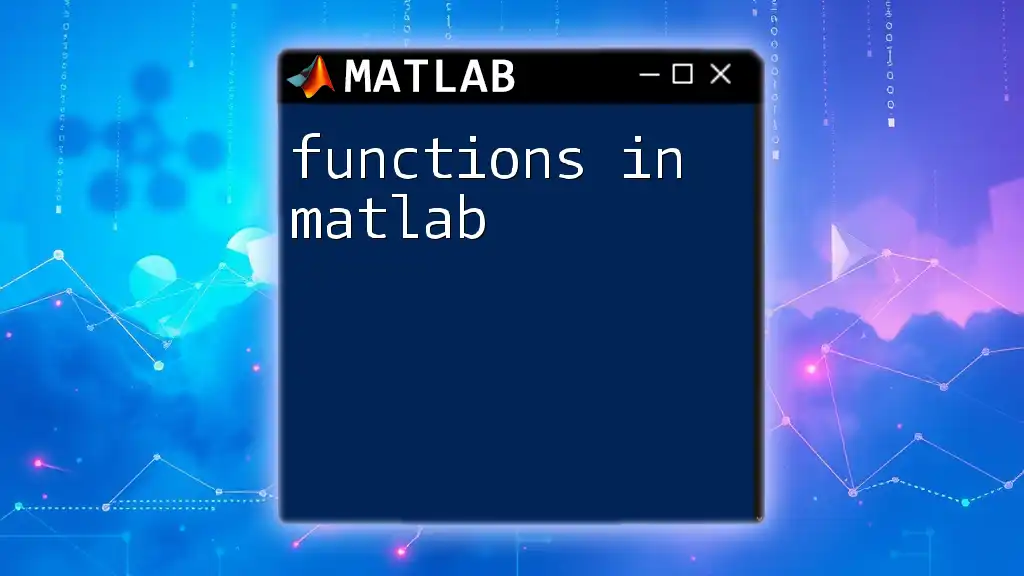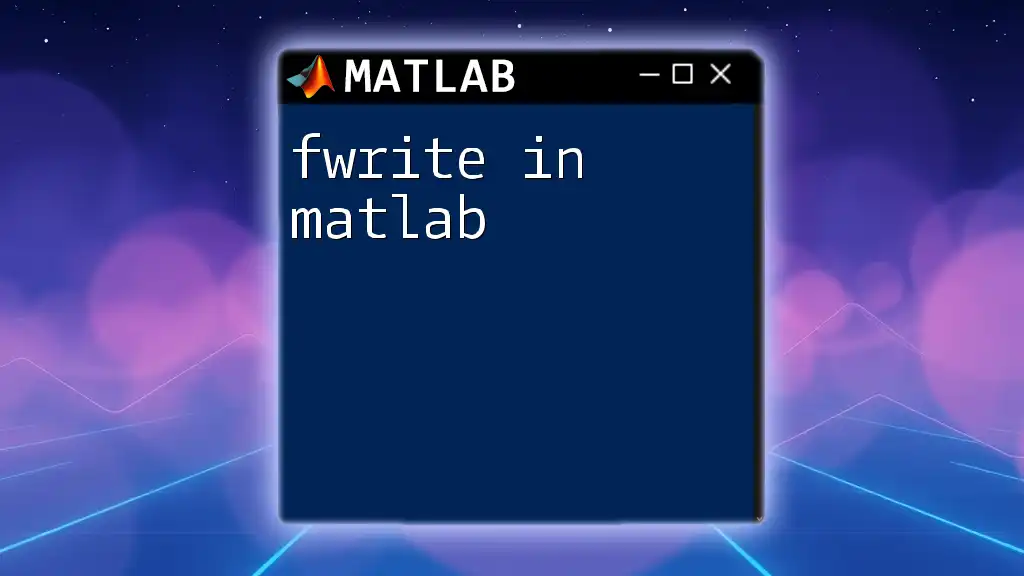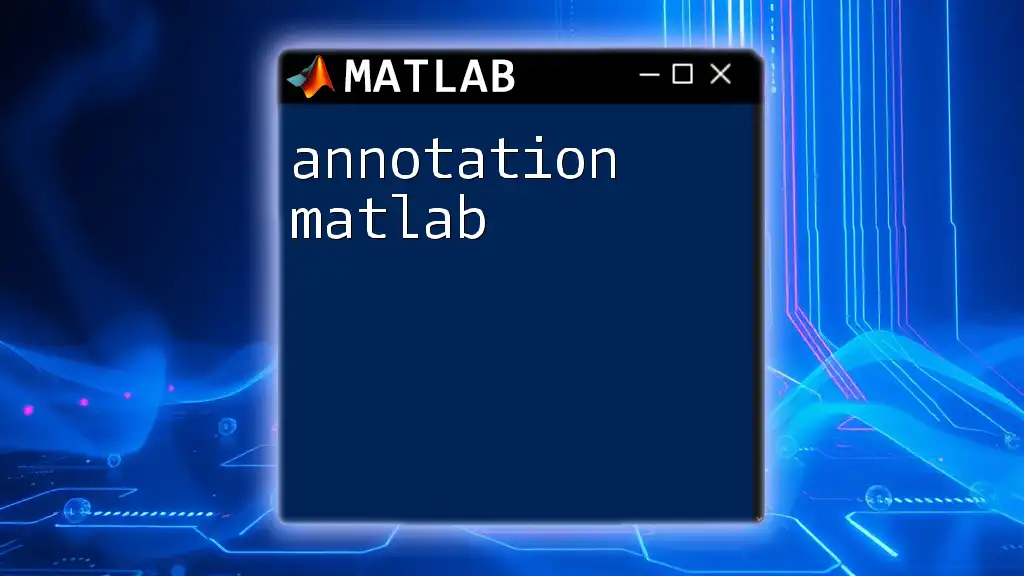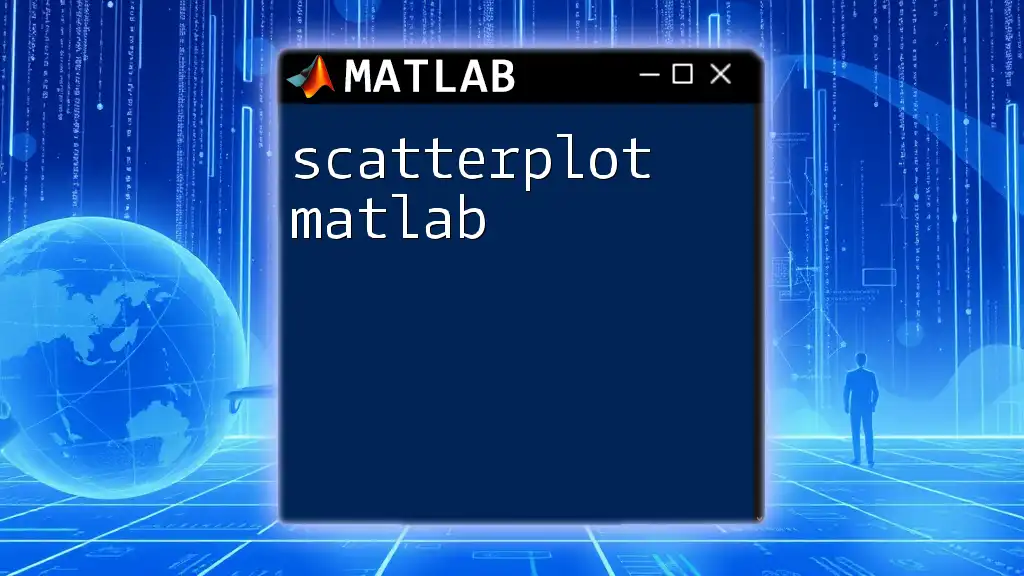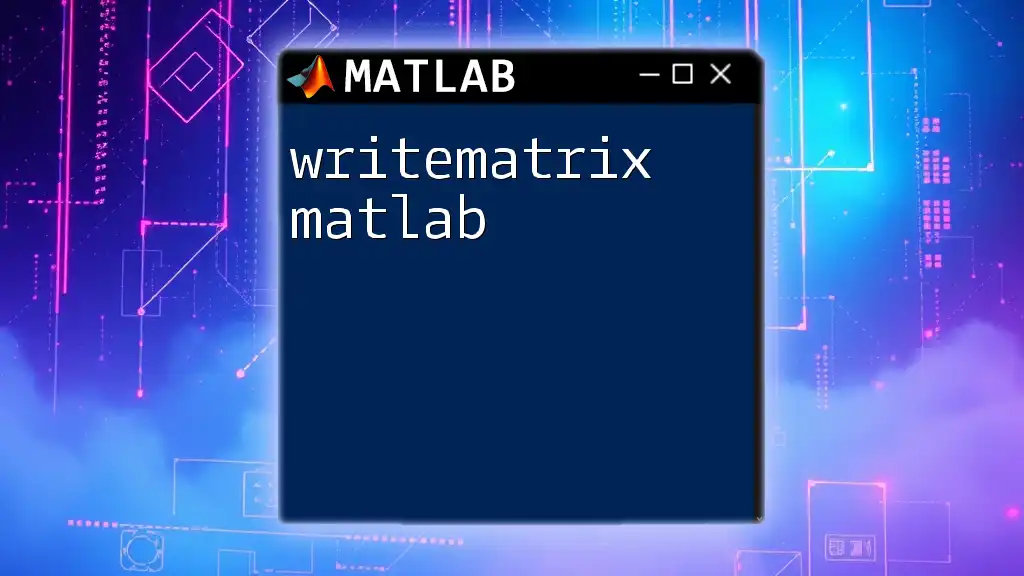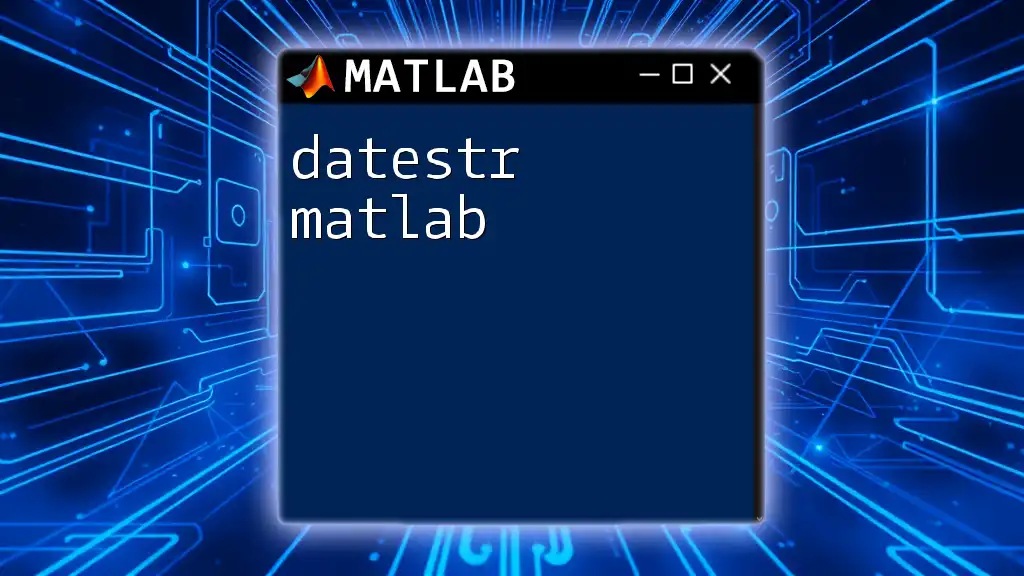In MATLAB, the `do` keyword is not standard; however, it can often refer to the concept of executing a loop or a command iteratively, typically used in conjunction with a `for` or `while` loop.
Here’s an example of a `for` loop in MATLAB:
for i = 1:5
disp(['Iteration: ', num2str(i)]);
end
Understanding Control Flow in MATLAB
What is Control Flow?
Control flow refers to the order in which individual statements, instructions, or function calls are executed in a program. In MATLAB, control flow commands play a crucial role in determining how a program behaves under different conditions. Understanding control flow helps you create complex algorithms by manipulating the flow of program execution.
Common Control Flow Commands in MATLAB
MATLAB provides several control flow commands, including:
- `if`: Used for conditional execution.
- `else`: An extension of `if` to specify alternative code execution when the condition is false.
- `for`: Loops through a specified range or array.
- `while`: Continues execution as long as a certain condition remains true.
- `switch`: Allows multi-way branching based on the value of a variable.
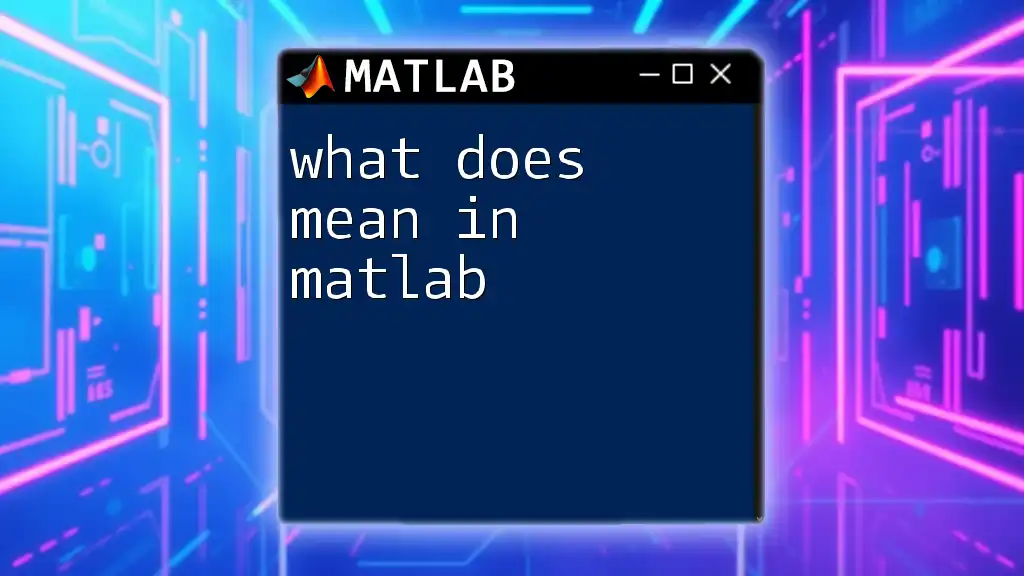
Overview of the `do` Keyword in Programming
Understanding `do` in Other Programming Languages
In many popular programming languages, such as C, C++, and Java, the `do` keyword is utilized in a control structure known as the `do-while` loop. A `do-while` loop ensures that code within the loop executes at least once, regardless of whether the condition is true or false at the start.
Lack of Direct `do` Command in MATLAB
However, unlike these languages, MATLAB does not have a direct equivalent to the `do` command. This absence leads us to explore alternative constructs available in MATLAB for creating similar functionality.

Alternative: Using `while` and `for` in MATLAB
The `for` Loop
The `for` loop in MATLAB is a powerful construct that allows you to iterate over a sequence of values. The general syntax for a `for` loop is:
for index = startValue:endValue
% Code to execute
end
Here’s a practical example that demonstrates the `for` loop:
for i = 1:5
disp(['Iteration: ', num2str(i)]);
end
In this example, the loop iterates from 1 to 5, executing the `disp` function to print the current iteration.
The `while` Loop
The `while` loop is another essential control structure in MATLAB that continues to execute a block of code as long as a specified condition remains true. Its syntax is:
while condition
% Code to execute
end
Consider the following example, which illustrates how to use a `while` loop:
i = 1;
while i <= 5
disp(['Iteration: ', num2str(i)]);
i = i + 1;
end
Here, the loop continues until `i` exceeds 5, incrementing `i` by 1 on each iteration while printing the current iteration.
The Use of Conditional Statements in Loops
Combining conditional statements with loops can enhance the functionality of your code. Here’s an example demonstrating how to use an `if` statement within a `while` loop:
i = 1;
while i <= 5
if mod(i, 2) == 0
disp(['Even Number: ', num2str(i)]);
end
i = i + 1;
end
In this code snippet, the `if` statement checks if `i` is an even number before displaying it, thereby demonstrating the integration of control flow within loops.

Practical Use Cases
Iterating Through Arrays with Loops
Loops are invaluable for manipulating and processing data within arrays. For example, here’s how you can sum elements in an array:
array = [1, 2, 3, 4, 5];
total = 0;
for i = 1:length(array)
total = total + array(i);
end
disp(['Total: ', num2str(total)]);
In this example, the `for` loop iterates through each element in the `array`, accumulating the total in the variable `total`.
Nested Loops for Multi-Dimensional Data
When dealing with multi-dimensional arrays, nested loops become essential. Here’s how a nested loop can access and print elements of a matrix:
matrix = [1, 2; 3, 4];
for i = 1:size(matrix, 1)
for j = 1:size(matrix, 2)
disp(['Element at (', num2str(i), ',', num2str(j), '): ', num2str(matrix(i,j))]);
end
end
In this snippet, the outer loop iterates through the rows of the matrix, while the inner loop iterates through each column, displaying the value at each position.
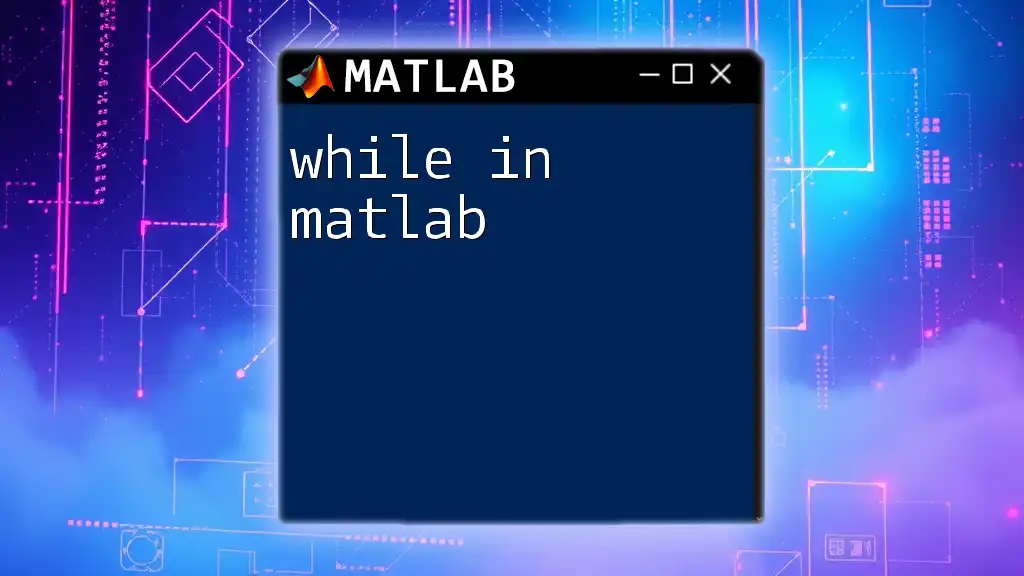
Conclusion
In summary, while you may wonder what does `do` in MATLAB, it’s crucial to note that MATLAB does not have a `do` keyword like some other programming languages. However, the `for` and `while` loops serve as robust alternatives, providing versatile options for creating complex control structures. Understanding these alternatives allows you to craft powerful scripts and functions, making your data analysis or engineering tasks more efficient.
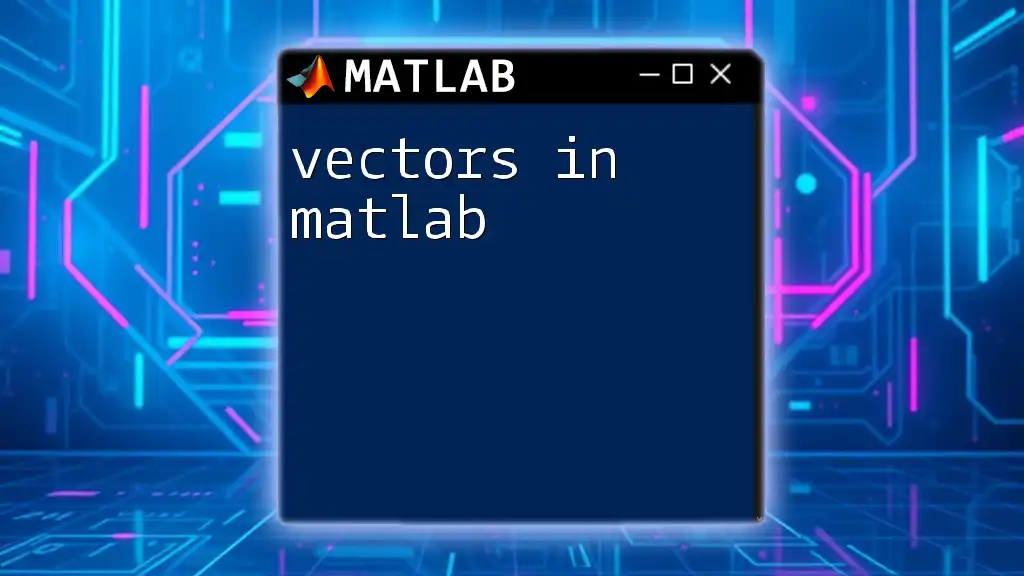
Call to Action
If you found this guide helpful, be sure to subscribe for more tips on mastering MATLAB commands. For those eager to deepen their understanding, a free resource or guide on MATLAB commands awaits you!
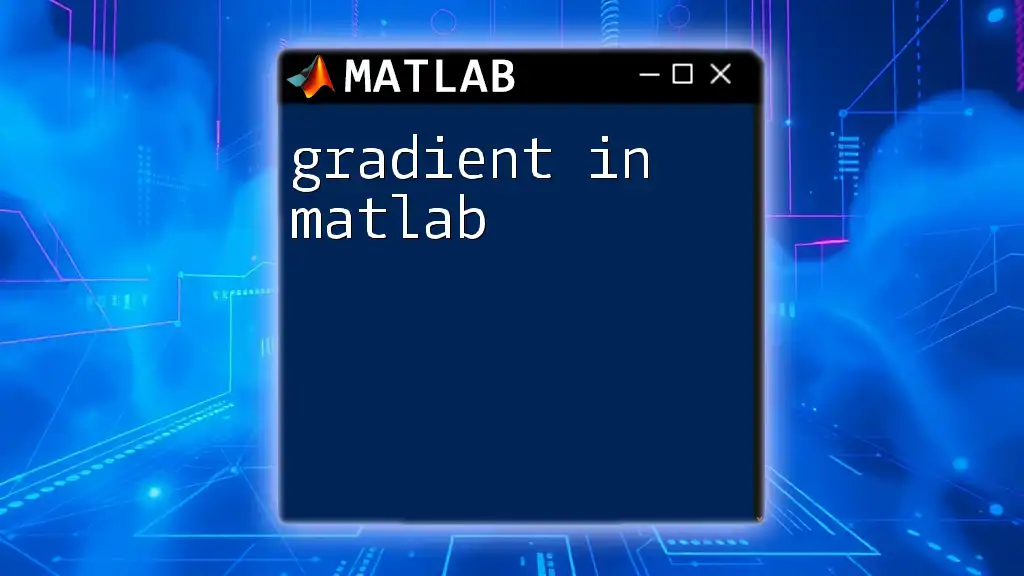
Additional Resources
For further learning and exploration, check out the official MATLAB documentation or consider some highly recommended books and online courses. Engaging with community forums can also provide insights and support as you navigate the world of MATLAB.








